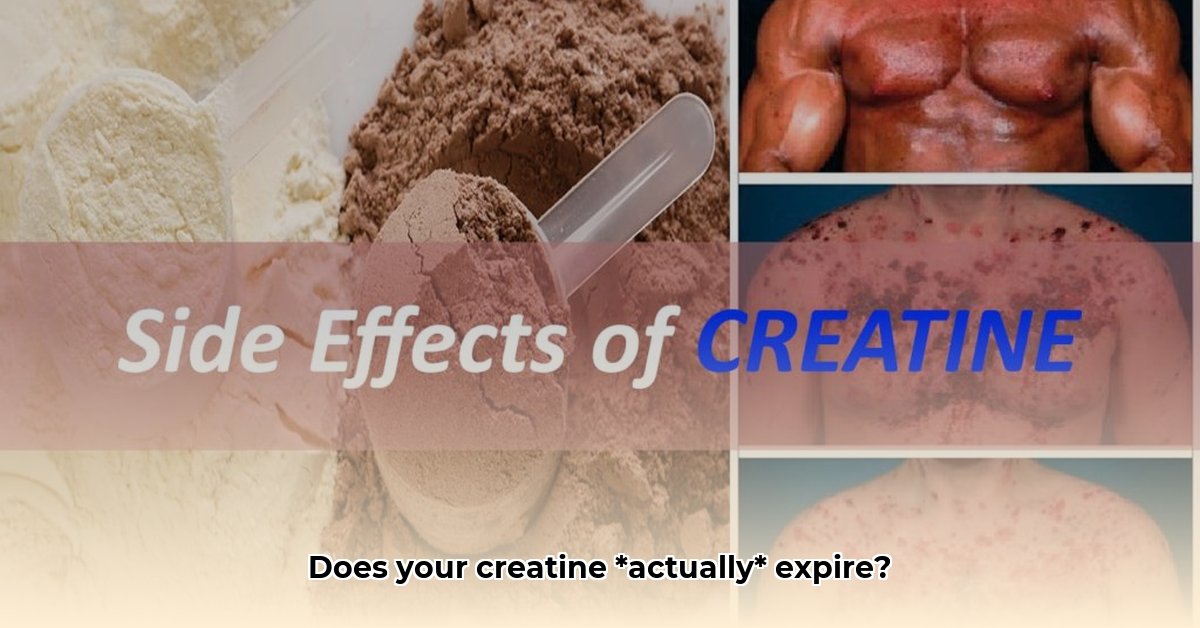The Creatine Expiration Myth: Does It Really Go Bad?
You’ve probably heard that creatine expires like milk. Turns out, that’s not quite true. This guide debunks the myth of creatine expiration, exploring how it actually degrades, what to watch for, and the best storage practices to keep your creatine potent.
Creatine Degradation: Not Spoilage, But a Slow Fade
Creatine doesn’t “go bad” in the way food does. It won’t grow mold or make you sick. Instead, it slowly converts to creatinine, a harmless byproduct your body already produces. Think of it like a battery gradually losing its charge—it still works, but not at peak performance. This conversion is primarily influenced by moisture and heat.
Creatine Monohydrate: The Shelf-Life Champ
Most creatine supplements contain creatine monohydrate, and for good reason. It’s the most stable form, likely remaining effective for years, often exceeding the printed expiration date. Studies suggest that under proper storage conditions, creatine monohydrate remains structurally sound and effective well beyond the typical two-to-three-year expiration date printed on most labels.
Other Creatine Forms: A Bit More Finicky
Other forms like creatine ethyl ester, HCL, and liquid creatine are generally less stable than monohydrate. They tend to degrade more quickly, meaning a shorter shelf life. While they might offer certain purported advantages, their stability is a definite drawback. If you’re looking for longevity, monohydrate is probably your safest bet.
Spotting a Less-Than-Optimal Creatine
While unlikely to be harmful, degraded creatine might not deliver the results you expect. Look for these signs:
- Discoloration: A shift from bright white to yellow or brown suggests degradation.
- Off Odor: A strange or unpleasant smell is another warning sign.
- Altered Taste: A significant change in taste can also indicate degradation (but avoid tasting supplements directly).
- Clumping: While often caused by moisture, clumping itself isn’t necessarily a sign of degradation. Break up the clumps. If there are no other signs, it’s probably still usable. However, persistent clumping, especially in conjunction with discoloration or odor, suggests that the degradation process may have begun.
Maximize Potency: The Ultimate Creatine Storage Guide
Proper storage is crucial for maintaining creatine’s effectiveness. Here’s how to do it right:
- Original Container is Best: Keep it in the original packaging, which is designed to protect the powder.
- Cool, Dark, and Dry: Store in a cool, dark, and dry place like a pantry or cupboard, away from heat and humidity. Avoid the bathroom.
- Seal Tightly: Ensure the lid is securely closed after each use to minimize air and moisture exposure.
Creatine Shelf Life: A Quick Reference
| Creatine Type | Estimated Shelf Life |
|---|---|
| Monohydrate | 2-3+ years (often longer if stored correctly) |
| Ethyl Ester | 1-2 years |
| HCL | 1-2 years |
| Liquid | < 1 year (refrigeration may extend shelf life) |
Creatine FAQs: Your Burning Questions Answered
- Is expired creatine dangerous? It’s probably not dangerous, but its effectiveness may be compromised. If it looks, smells, or tastes off, or if it’s well past its expiration date, replace it.
- How long is creatine good after opening? Proper storage is key, regardless of whether the container has been opened. Monohydrate, if stored correctly, can last for years even after opening.
- Does heat affect creatine? Yes, heat accelerates degradation. Keep it cool to maximize its lifespan.
- Can I store creatine in the refrigerator or freezer? While refrigeration might seem like a good idea, it’s generally not recommended. Temperature fluctuations and potential condensation can introduce moisture, potentially accelerating degradation. Freezing is also not advisable, as it could alter the creatine’s structure.
Ongoing Research: What We Still Don’t Know
While the current research suggests these guidelines, our understanding of creatine stability is continually evolving. For example, some research suggests that micronized creatine, due to its smaller particle size, may be more susceptible to humidity. More research is needed to fully understand the long-term effects of various storage conditions on different forms of creatine.
The Bottom Line: Long-Lasting Creatine Power
Creatine doesn’t expire in the same way food does. It degrades, slowly losing potency over time. By following these storage best practices and staying vigilant for signs of degradation, you can maximize the shelf life of your creatine and ensure you’re getting the most out of every scoop.
- Glass Bento Containers Make Packing Lunch Easier and Healthier - December 19, 2025
- How Glass Bento Box Containers Make Meal Prep Easier - December 18, 2025
- Why Glass Boxes for Lunch Are Trending for Meal Prep - December 17, 2025










